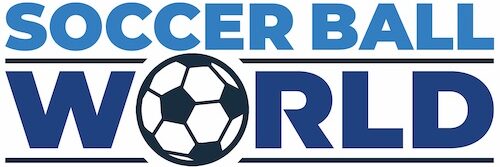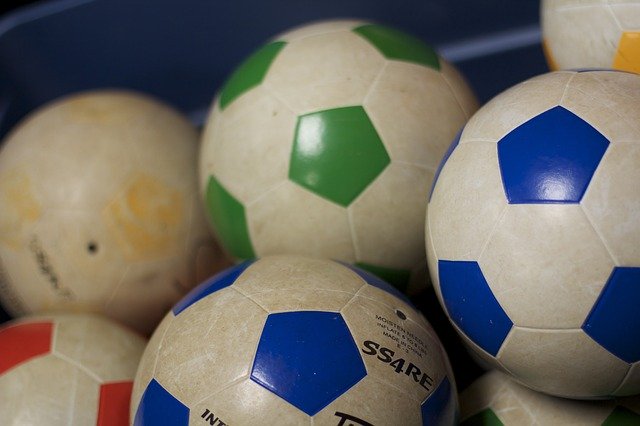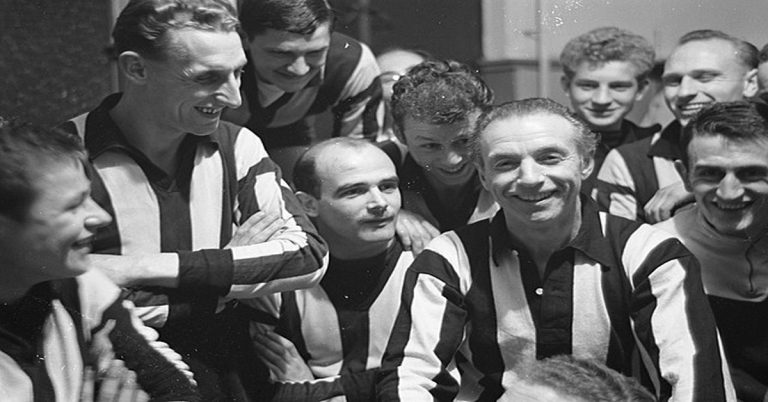Why Are Soccer Balls Black And White And How To Choose The Right Soccer Ball For You
Soccer has millions of fans worldwide. It has people going to stadiums to watch live matches, following games on TV or through live streaming, placing Free Bets and supporting their teams in many different ways!
As a soccer fan yourself, have you ever wondered though why soccer balls are made up of black and white polygons? How did this come about? Let’s see!
Originally soccer balls were improvised and usually consisted of pieces of fabric or leather.
In medieval England, instead of balls, they used wine bags filled with cork to float in case they fell into the river.
The first balls
The chemical treatment of rubber (vulcanization) by Charles Goodyear (the founder of the tire company) in the mid-19th century was to change, among other things, the future of football as the balls slowly began to take shape. In 1885 Goodyear made the first rubber soccer ball. The creation of the inner tube by H.J. Lindon seven years later made the ball more comfortable to hit while helping it maintain its spherical shape.
In the early ’50s, fashion wanted the balls to be white, something that was achieved by dyeing the outer skin.
The next decade began the use of synthetic materials with the aim of achieving uniform thickness on the outer shell of the ball. In fact, then the orange ball was introduced in the winter games with snow for better visibility!
The ball with the black and white polygons
But the ball as we know it today, with its white and black hexagons and pentagons, was designed in 1960 by the American architect and inventor Richard Buckminster Fuller, a lover of minimalist design. And while until then soccer balls consisted of 18 sections sewn together, Fuller designed a spherical polyhedron consisting of 20 hexagons and 12 pentagons. This ball is known as “buckyball” from the middle name (Buckminster) of the man who designed it.
The first ball of this shape used in an official game was the Adidas Telstar at the 1970 World Cup. The Telstar consisted of 20 white hexagons and 12 black pentagons to look better on television.
But this choice also had an extra positive for the footballers. The black pentagons helped the flanks (!) As it was easier for the footballer to be able to follow the course of the ball.
In fact, Adidas maintained this design for more than 30 years until 2002.
However, Fuller’s design gained a place in eternity in 1996 when H. Kroto, R. Curl and R. Smalley won the Nobel Prize in Chemistry for their discovery of a spherical molecule with a C-60 molecular formula called Buckminsterfullerene.
This molecule is found in a small content in the soot, ie in the carbon particles resulting from the incomplete combustion of hydrocarbons. What is the most impressive bit? This molecule consists of 20 hexagons and 12 pentagons! Just like Fuller’s ball! After all, nothing is accidental or random!
Next we will give you some advice on choosing the right soccer ball for you.
If you are looking to buy a soccer ball then you will surely notice a fairly large difference in prices from ball to ball. Many people look at the prices and usually choose one of the cheapest soccer balls. This is usually not the best choice. In fact there are several factors to consider before choosing the right ball for you.
1. Choose a ball of the right size
The first step is to choose a ball according to its size depending on your age.
Size Ball 3
The size 3 soccer balls are the smallest balls in size and are intended for children under 8 years of age.
Size Ball 4
For children between 8 and 12 years old. It is also used in 5 × 5 courts.
Size Ball 5
It is the standard size in almost all leagues around the world and is suitable for all ages over 13.
If you play football it is important to train with the same size of ball you use in matches so that you can get used to the way the ball moves in the air and reacts on your feet.
2. Choose an indoor or outdoor ball
Indoor soccer balls are specially made for indoor soccer and are different from any other type of ball. It would be best to choose a ball for all conditions and spaces or the ball that best suits your training conditions.
3. Choose a ball based on the appropriate material for your needs
If you are looking for a cheap ball then rubber balls are a pretty good choice because they are not only cheap but also durable. However, they have nothing to do with balls used at the championship level. PVC is a slightly more expensive material and gives you a better feel, although it is not the best choice. Leather balls are more expensive options but usually absorb water which makes them unsuitable in rainy conditions. PU is a synthetic material similar to plastic but more durable and waterproof and for this reason it is used it in most leagues.
4. Choose a ball according to its inner tube
The tube is located inside the ball and is the part that gives it its shape and movement. Latex tubes are found in most balls and offer the best gaming experience. They lose their air relatively easily compared to balls with tubes of other materials and you need to inflate them more often, but in general it is the best type of tube for its price.
5. Select a ball according to the number of panels
The number of panels determines how the ball moves in the air and the control that players have with the ball at their feet.
6. Choose a ball that is not heavy
Their number varies from 32 panels in most classic soccer balls and as few as 6 in indoor soccer balls. In general, a ball with fewer panels is more aerodynamic as it bends more easily as you kick it while a ball with more panels will give more control to the players. In most leagues, balls with 26 panels are used. In general, the lighter the ball, the better it is, since it will not be as painful when you kick it or if it hits you in the face.
7. Choose a ball that is neither too hard nor too soft
A hard ball can hit you badly in the face or legs while an overly soft one can bounce more than you want.
8. Choose a ball where the panels are sewn together
There are many ways in which the panels are connected to each other but none of them is as durable as when the panels are sewn together and not glued.
9. Choose a ball that is at the right value
If you want a ball just to be played by your kids it would be best to choose one of the cheapest soccer balls. However, if you are a professional, you will need a more expensive and better-quality soccer ball.
Finally if you are a professional footballer then you should get a ball similar to the one you use in your matches. It makes no sense to train with a ball that will be different from the one that will be used in the games because your passes, your shots and the control of the ball will be completely different.



